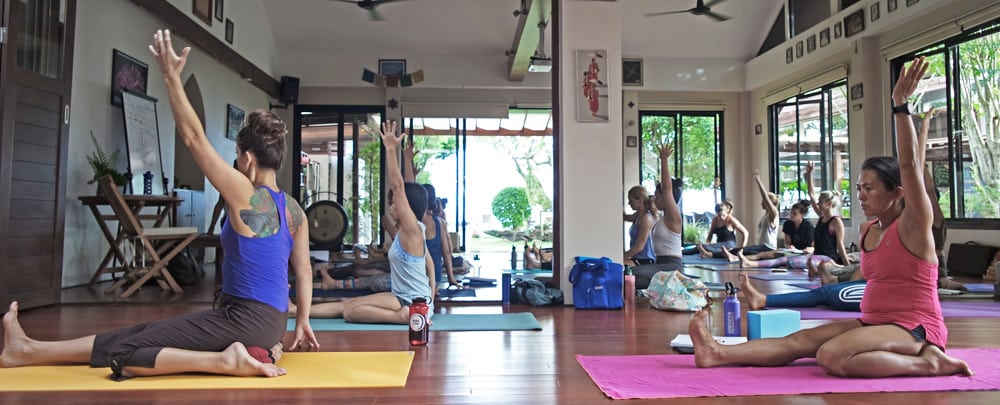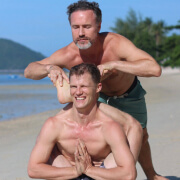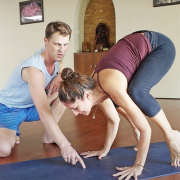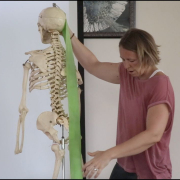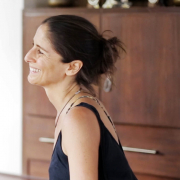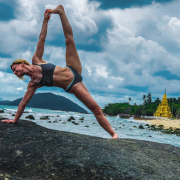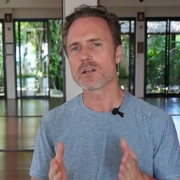 https://samahitaretreat.com/wp-content/uploads/2023/06/pathways-ss-2.jpg
469
800
Dr. Paul Dallaghan
http://samahitaretreat.com/wp-content/uploads/2024/01/samahita-logo-v2.svg
Dr. Paul Dallaghan2023-06-18 04:54:512024-02-15 09:48:49Pathways to becoming RYT 500 hr Yoga Teacher
https://samahitaretreat.com/wp-content/uploads/2023/06/pathways-ss-2.jpg
469
800
Dr. Paul Dallaghan
http://samahitaretreat.com/wp-content/uploads/2024/01/samahita-logo-v2.svg
Dr. Paul Dallaghan2023-06-18 04:54:512024-02-15 09:48:49Pathways to becoming RYT 500 hr Yoga TeacherYoga Sutras: Reflections from Experience on Teacher Training – Part Three
Yoga Sutras: Reflections from Experience on Teacher Training – Part Three
by Centered Yoga Team
Continuing the reflective theme from recent Centered Yoga Teacher Training 200 hour graduates and their thoughts and insights on the yoga sutras and its teaching, Irene reflects, thinks deep, and offers these thoughts:
“Prior to coming to Samahita, I had read the Yoga Sutras in two attempts. At first, I was intrigued by the Sutras but found them really difficult to understand and a bit dry. This changed when I started to read Yogananda’s Autobiography of a Yogi, a fascinating book that brings alive yogic saints and the concepts of spiritual practices and miracles. Now, I picked up the Sutras again and could relate to them. I often found myself re-reading and cross referencing them with chapters in Yogananda’s autobiography. However, the yoga as I understood it from Yogananda and supported by the Sutras was a yoga merely focussing on meditation and mental processes. I was missing the yoga I knew, the asana’s, the discipline it brings to my day, the satisfaction, balance and lightness I feel after my Ashtanga practice.
“Paul’s teachings and the clear description of the Sutra’s key concepts in the manual have brought me a renewed understanding what the Sutra’s advocate. I understand now the dependency between the body and the mind and how yoga can be in fact a tool to unite body and mind and channel your energies. It was also deepened my understanding of life and how to deal with its continuous challenges, temptations and monotonies. How yoga comprises an internal work, on the physical and mental level, in dealing with oneself, discipline, concentration and practice, and an external work, the dealing with one’s direct environment and relations.
“I can find myself very well in the systematic description of the ‘web of life’ we find ourselves entangled in (Samyoga), our environment (prakriti), the working of the mind (citta) and how we deal with its modifications (citta vrittis), distractions and distortions (klesas). Also the holistic view of yoga (the 8 limbs) and the codes of conducts described for each ‘leg’ (eg the yama’s and niyama’s) and the practical approaches to yoga, such as continuous practice (abhyasa) and non-dependence (vairagya) and Kriya Yoga resonate with me. I identify to a lesser degree with the concept of ‘purusha’, the true self as a reincarnating vehicle of truth. I understand and agree that and how ‘purusha’ resides in one individual but feel less affection with the concept of the ‘reincarnating eternal purusha’. To me at this point the Samkhya concept almost turns into a religion as I believe that reincarnation is a belief and not a truth.
“In summary, the Sutra’s and Paul’s excellent teaching, have created a deep understanding of what yoga is to me and why I should do more of it, on all levels. It is also motivating me to study more and practice more. Thank you!”
Irene Visser, August 2018
More from the Samahita Blog
